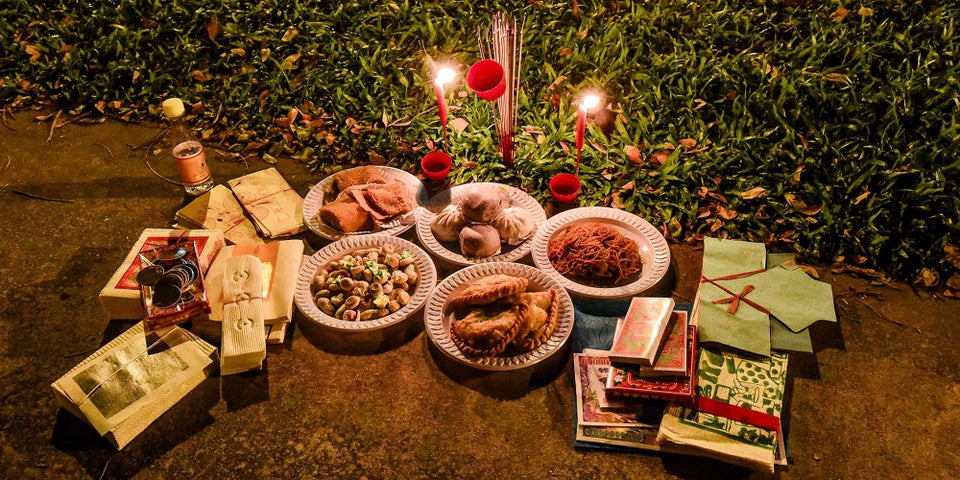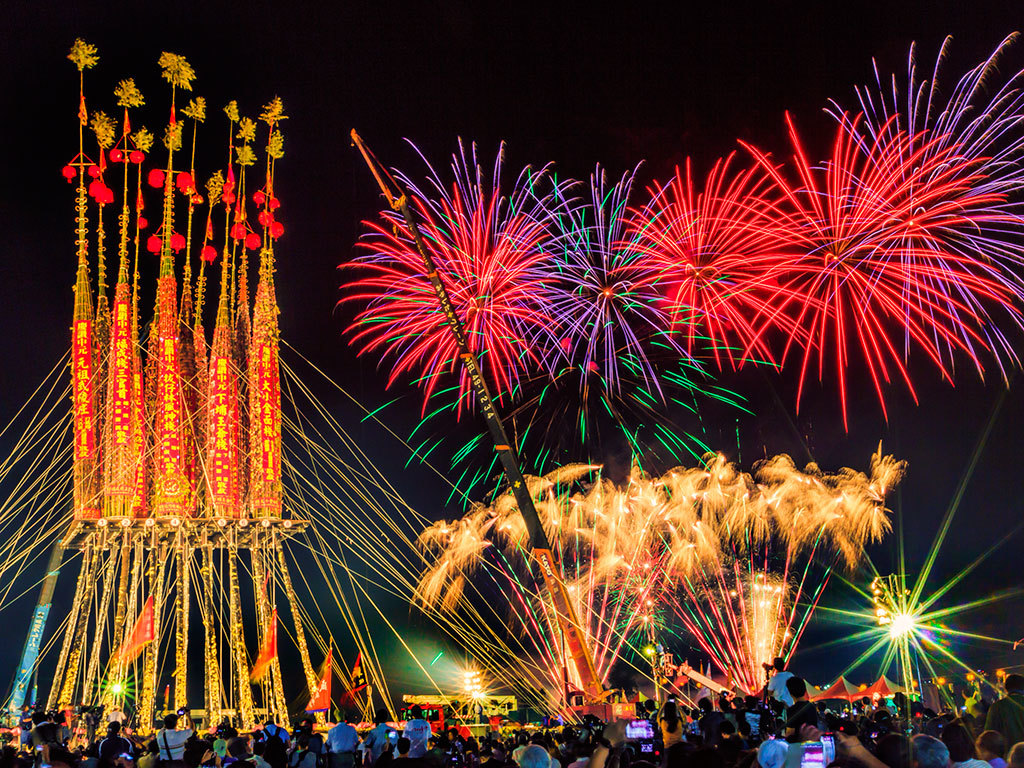
Western people have Halloween as their ghost festival. People in Chinese culture also have ghost festival, which falls on the fifteenth day of the seventh lunar month and is known as “Zhongyuan Festival” or “Hungry Ghost Festival”. Originally, western people wore costumes and makeups to scary away the spirit on Halloween. Now it’s a day for people to have fun and relax. In comparison, the essence of the Chinese Ghost Festival never changes-it’s a day for people to show their respect to their ancestors and the wandering spirits.
The Origin of Ghost Festival
Zhongyuan Festival has been existing since the Han dynasty (Around 1st century). It was a day to show gratitude to the gods and ancestors for the harvest season. As Taoism develop in China, the festival was enriched with Taoist culture. Besides worshiping their ancestor, people also started to pray for the wandering spirits so the spirits can be amnestied by god.


In Buddhism, Zhongyuan Festival has another name-Ullambana. Legend has it that Maudgalyayana, who is the disciple of Buddha, found his mother reborn in the realm of hell to be punished for her sin. He filled an alms bowl with food and offered it to his starving mother. But before the food could reach her mouth, it turned in to burning charcoal and she was not able to take it. To stop his mother from suffering, Maudgalyayana begged Buddha to release his mother from hell. Buddha said that his mother’s transgressions are too deep and the only way to save his mother was to hold a summer feast and gather the spiritual powers of the monks and the people of kindness on the 15th day of the seventh lunar month. With the spiritual power, Maudgalyayana successfully saves his mother from hell. The 15th day of the seventh lunar month then became a festival to liberate the sentient beings who suffer in the wretched realms.

Ullambana – The Ghost Festival of Buddhism
Ghost month in Taiwan
Zhongyuan Festival is a common language of people in Chinese culture. However, Ghost month only exists in Taiwan and Singapore. Researchers pointed out the reason why we have ghost month is probably that in the early history of Taiwan, the immigrants often fight for territory, resources, and oversea invaders. To comfort the wandering ghosts who died of the fights, Taiwanese contribute the seventh lunar month to the spirits offering some feasts.
The stereotype of Ghost Month
For some Taiwanese, Ghost Month is ominous and it is full of taboos. People are told not to go traveling, do water sports, wander at nights, change dwelling place, get married, blow the whistle, hold a funeral. There are countless taboos and only some of them are explainable. For example, people should not get to close to the waters because the weather of Ghost Month can be unstable. (It’s summer in Taiwan)

Don’t Tap Your Friends On Their Shoulder!
It’s believed that everyone has 3 torches on each side of their shoulders and head to protect us. If you tap your friend on the shoulder at night, you put out their fire and thus take away the protection from the evil ghosts.
It’s really perplexing where the unexplainable taboos come from. The meaning of Ghost Month is to be merciful to the sentient beings, to express gratitude to the ancestors, to worship the gods for the harvest. So there’s no need to be superstitious. If you happen to visit Taiwan in Ghost month, you can even explore some unique cultural events.
Special events in Ghost Month
Keelung Mid Summer Ghost Festival
At the festival, You can see the most important rite-the offering of food. The believers make sacrifices of rich dishes to sate the lonely ghosts’ appetites. Visitors can also join the parade to walk to the seashore, releasing the water lanterns at night and pray for good luck. It’s a ceremony that photographers would never miss.


People release water lanterns on the sea
Toucheng Chianggu Competition
The Chianggu competition at Toucheng is on the largest scale and it’s also the most difficult one. The meaning of the competition is to worship the ancestors who sacrifice themselves to pioneering and to supply the poor with foods. The competitors are required to climb up to the 43 meters-high structure to snatch the flag. The structure can be divided into 3 parts: upper part, platform, and lower part. The upper part is tied with sacrifice and the lower part is applied with oil. However, it’s not easy to feel how exciting the competition is. If you are in Taiwan around August, be sure to go Yilan and cheer for the climbers.

留言